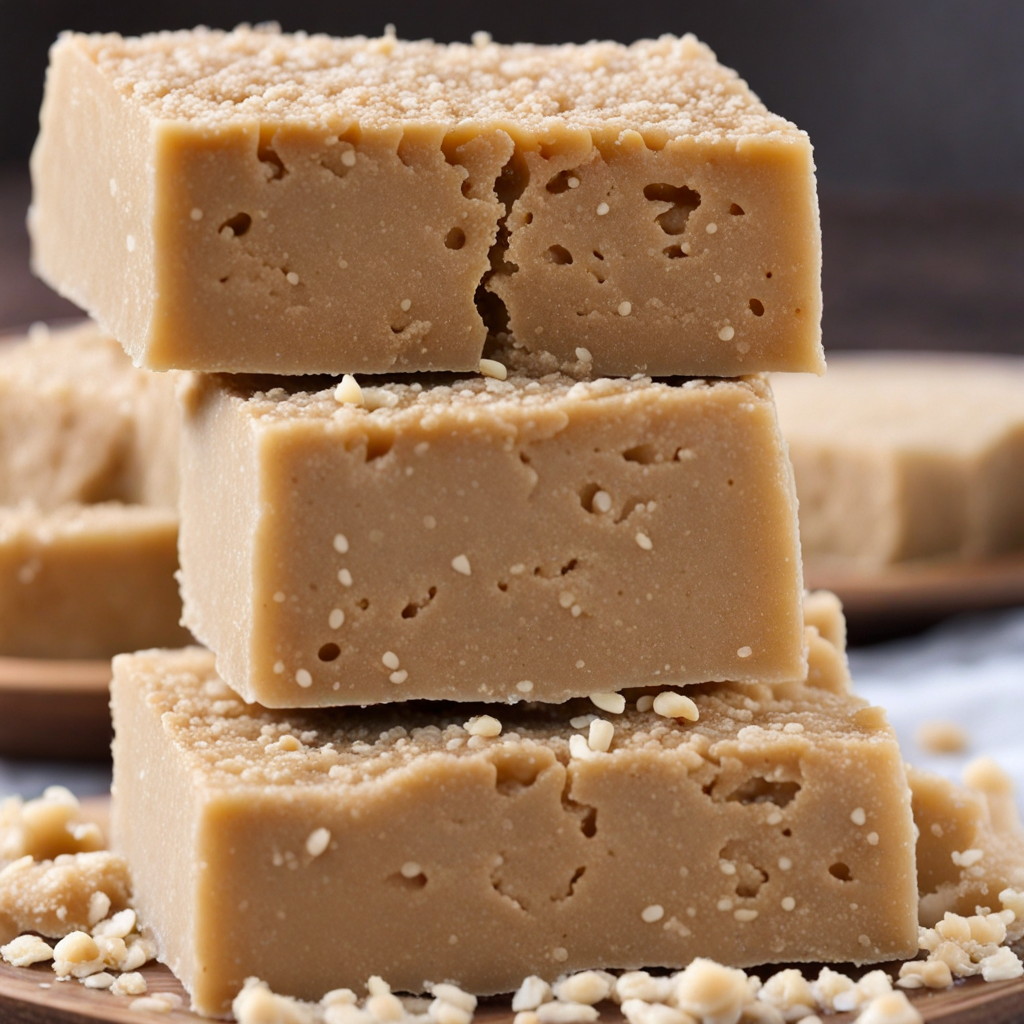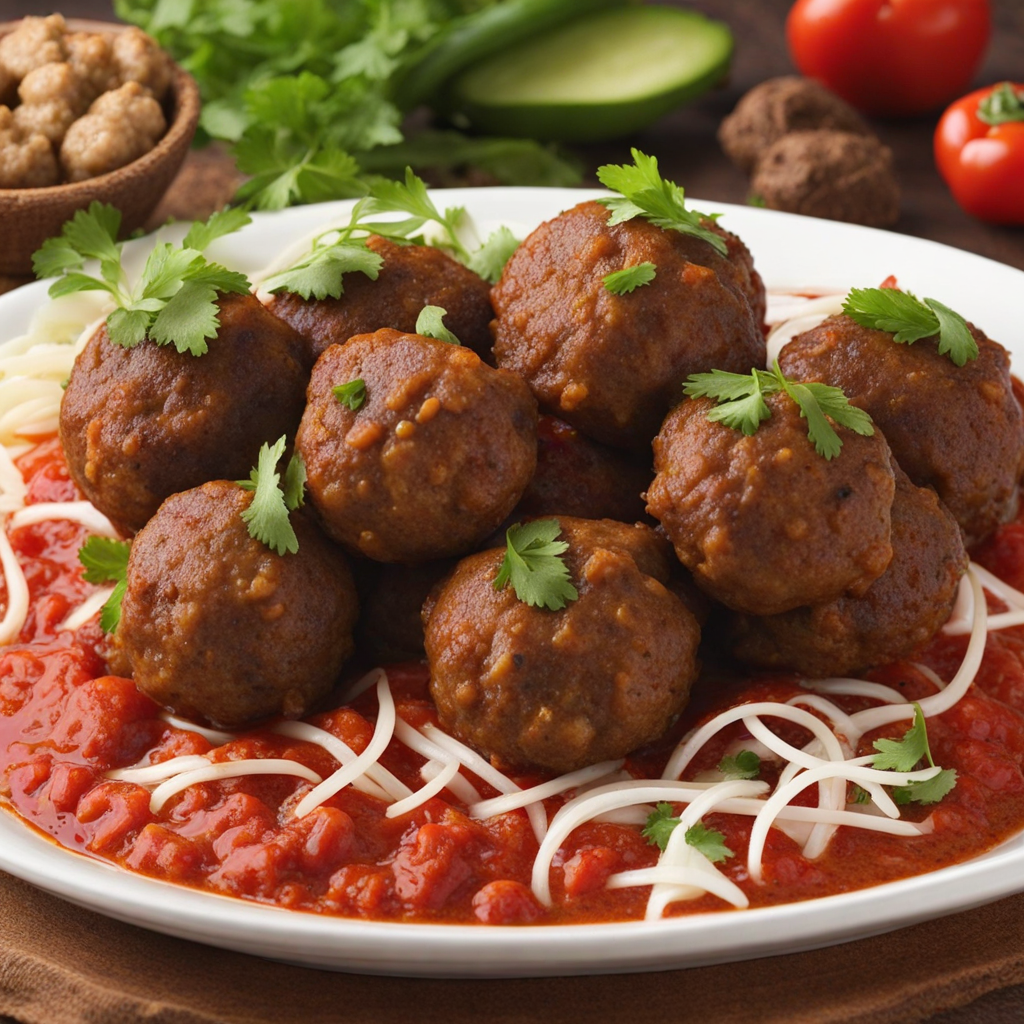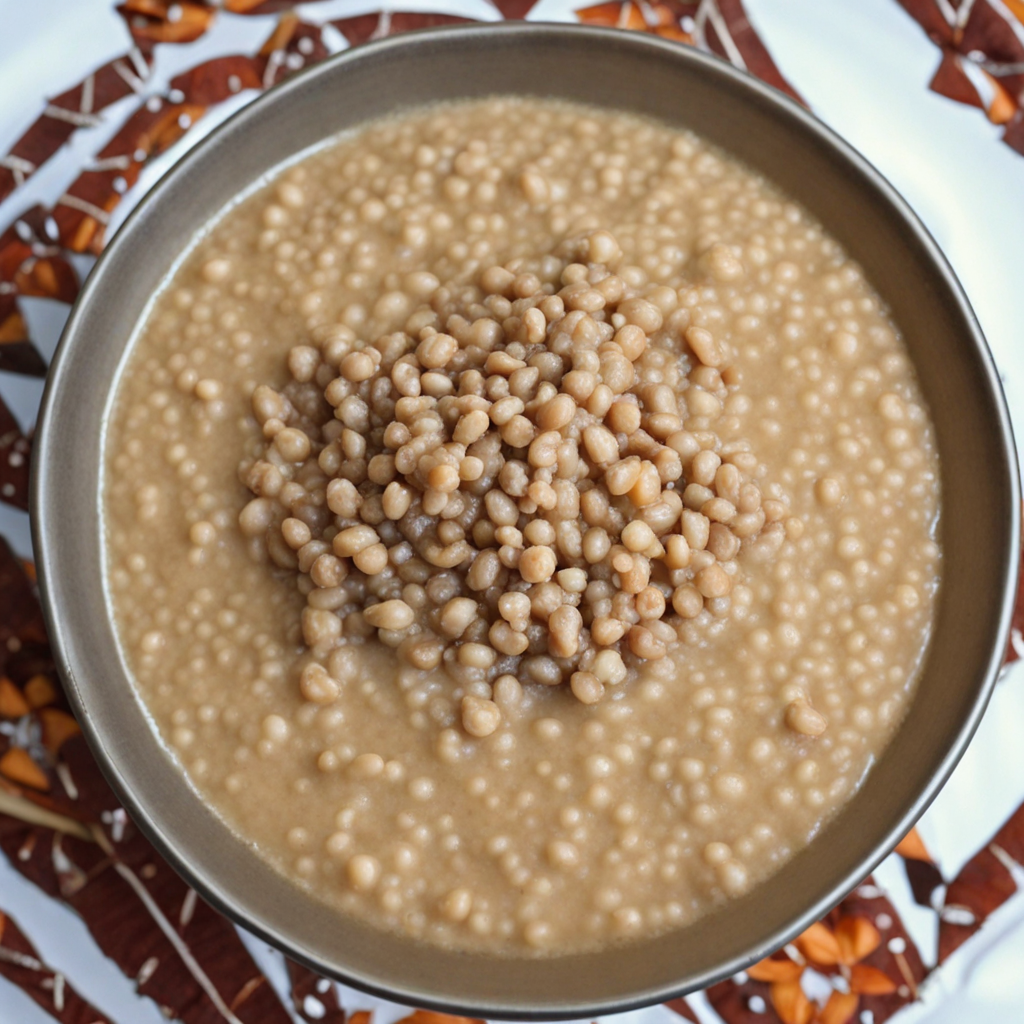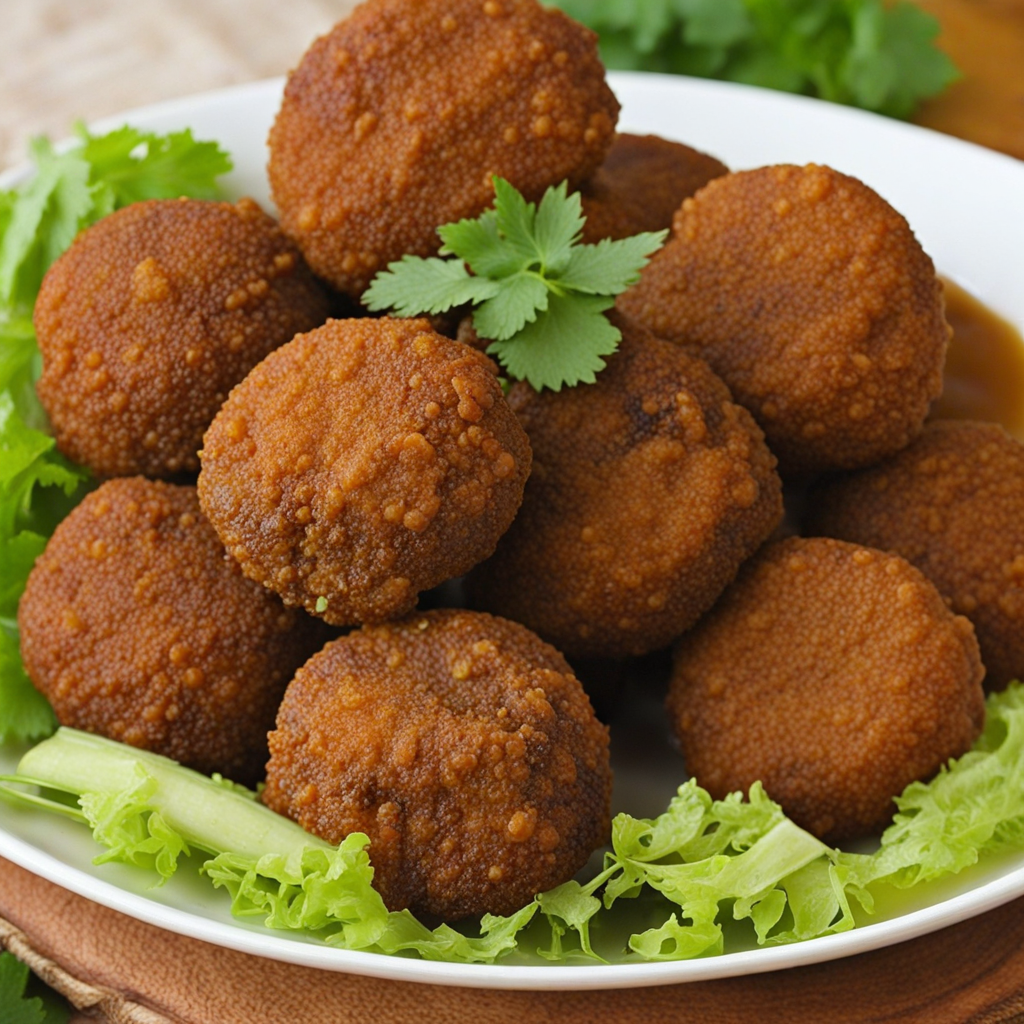Halva
Halva, a delightful treat from Sudan, is a sweet confection that takes center stage in many celebrations and gatherings. This dessert is characterized by its unique texture, which is both crumbly and melt-in-your-mouth soft. Traditionally made from finely ground sesame seeds, it is often sweetened with sugar and flavored with a hint of vanilla or cardamom. The rich, nutty flavor of the sesame shines through, creating a comforting and satisfying experience that is both familiar and exotic to the palate. In Sudanese culture, Halva is not just a dessert; it represents hospitality and generosity. It is commonly served during festive occasions, weddings, and family gatherings, making it a symbol of unity and joy. The preparation of Halva can involve a meticulous process of roasting the sesame seeds to enhance their flavor, followed by grinding them into a paste. The combination of the toasted seeds with sweeteners results in a heavenly mixture that is shaped into molds or cut into squares for easy serving. What sets Sudanese Halva apart from other variations found around the world is its use of local ingredients and the artistry involved in its creation. Some variations may include added ingredients like pistachios, almonds, or even dried fruits, providing a delightful contrast in texture and flavor. Each bite of Halva offers a taste of Sudanese culture and tradition, making it a must-try for anyone looking to explore new flavors and indulge in a sweet experience that lingers on the palate.
How It Became This Dish
The Sweet History of ‘حلوة’ (Halwa) in Sudan #### Origins and Historical Context ‘حلوة’ (Halwa) in Sudan is more than just a dessert; it is a culinary emblem that reflects the rich tapestry of Sudanese culture and history. The word ‘حلوة’ itself translates to “sweet” in Arabic, and the dish presents a delightful mix of flavors and textures that have evolved over centuries. The origins of Halwa can be traced back to the broader Middle Eastern traditions of sweet-making but developed uniquely within Sudan's context due to its diverse cultural influences, geography, and the local agricultural bounty. Historically, Sudan has been a cultural crossroads, influenced by Arab, African, and Mediterranean traditions. The trade routes that traversed the region facilitated not only the exchange of goods but also culinary practices. It is believed that the art of making Halwa was brought to Sudan by Arab traders and settlers, who introduced various grains, nuts, and sweeteners such as dates and honey. Over time, local ingredients were integrated into the recipe, creating a distinctly Sudanese version of Halwa that reflects the country’s agricultural heritage. #### Ingredients and Preparation The traditional Sudanese Halwa is made from a base of ground grains, typically semolina or wheat flour, which is toasted to develop a nutty flavor. The grains are then combined with sugar, water, and a variety of flavorings, such as cardamom, vanilla, or rosewater. Nuts—such as almonds, pistachios, or walnuts—are often added for texture and richness. One of the most popular variations includes using dates or molasses, which serve to sweeten the dish naturally and enhance its depth of flavor. The preparation of Halwa is an art form; it requires careful attention to technique. The mixture is cooked until it thickens and reaches a pliable consistency, then spread into a shallow tray, cooled, and cut into squares or diamonds. Each piece is often garnished with additional nuts or a dusting of powdered sugar, making it not only a treat for the palate but also a feast for the eyes. #### Cultural Significance Halwa holds a special place in the hearts of Sudanese people, transcending mere sustenance to embody hospitality and celebration. It is commonly served during significant life events such as weddings, births, and religious festivities like Eid al-Fitr, marking the end of Ramadan. In these contexts, Halwa symbolizes abundance and sweetness, reflecting the joy and blessings of the occasion. In Sudanese culture, the act of sharing food is a vital social ritual. Offering Halwa to guests is a sign of respect and hospitality, reinforcing communal bonds. The preparation of Halwa often involves family and friends coming together, emphasizing the importance of togetherness and celebration. Furthermore, it is not uncommon to find Halwa being sold by street vendors, serving as a popular snack for those on the go and contributing to the vibrant street food culture in Sudanese cities. #### Evolution Over Time As Sudan has undergone significant social and political changes, so too has the culinary landscape, including the evolution of Halwa. In recent years, globalization and modernization have introduced new flavors and techniques to the traditional recipe. While the classic Halwa remains beloved, contemporary variations have emerged, incorporating ingredients such as chocolate, coconut, and even exotic spices from other cultures. This evolution reflects not only the adaptability of Sudanese cuisine but also the influences of a more interconnected world. The rise of social media has played a pivotal role in this evolution, with food bloggers and influencers showcasing Sudanese culinary heritage, including Halwa, to a global audience. This exposure has sparked a renewed interest in traditional dishes, encouraging younger generations to preserve and innovate upon their culinary heritage. Cooking classes and workshops focusing on traditional Sudanese sweets have also gained popularity, further ensuring that the art of Halwa-making is passed down through generations. #### Halwa in the Diaspora The Sudanese diaspora has been instrumental in keeping the tradition of Halwa alive outside Sudan. Communities around the world have embraced this cherished dessert, often adapting recipes to incorporate locally available ingredients while preserving the essence of the original. In cities with significant Sudanese populations, such as London, Toronto, and Washington, D.C., Halwa is featured in cultural festivals and events, serving as a culinary ambassador of Sudanese heritage. In these contexts, Halwa not only serves as a connection to homeland but also acts as a bridge for cultural exchange. It introduces diverse audiences to Sudanese flavors and customs, fostering understanding and appreciation of the country's rich culinary history. The presence of Halwa in these communities reinforces the idea that food is not just about nourishment but also about identity and belonging. #### Conclusion The history of ‘حلوة’ (Halwa) in Sudan is a testament to the resilience and dynamism of Sudanese culture. From its origins as a simple sweet enjoyed by traders and farmers to its status as a symbol of hospitality and celebration, Halwa has evolved while remaining rooted in tradition. Its significance extends beyond taste; it embodies the spirit of community, family, and cultural heritage. As Sudan continues to navigate the complexities of modern life, Halwa stands tall as a delicious reminder of the past and a hopeful symbol of the future. Whether enjoyed in the bustling streets of Khartoum, at family gatherings, or shared among friends in diaspora communities, Halwa remains a sweet thread woven into the fabric of Sudanese identity, encapsulating the flavors of history, culture, and connection.
You may like
Discover local flavors from Sudan







